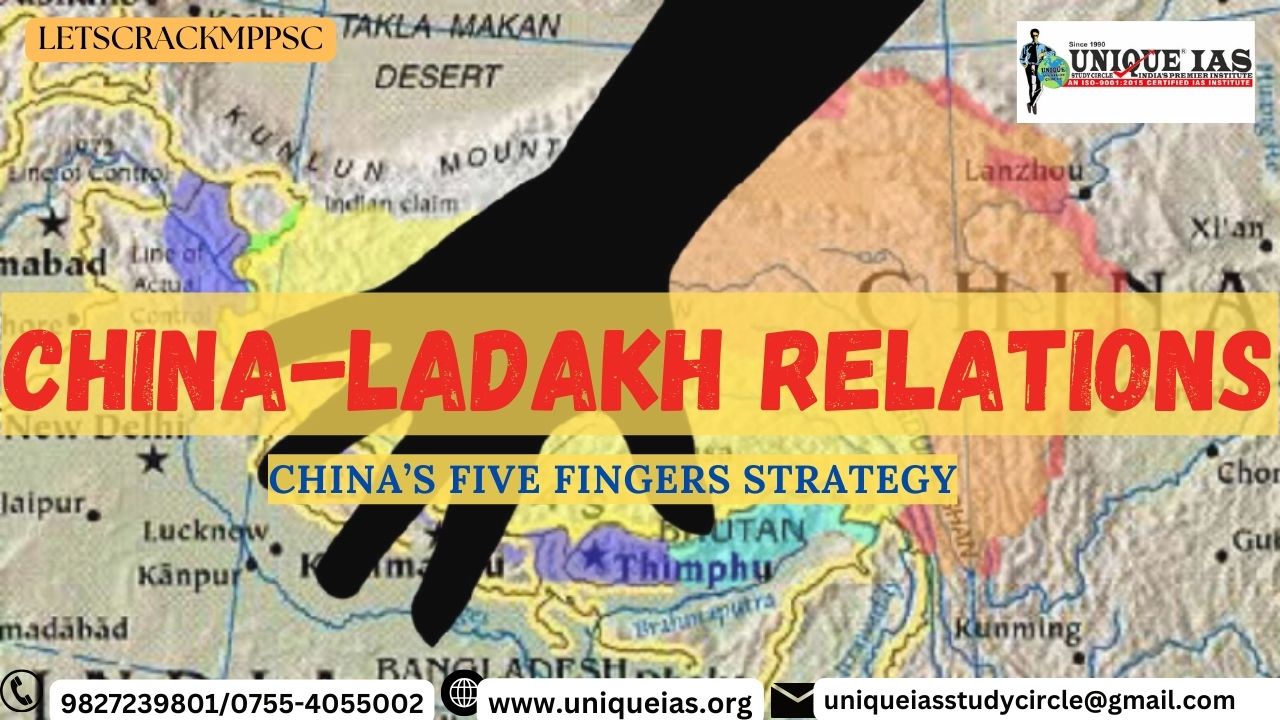China’s Five Fingers of Tibet Strategy
The metaphorical term describes Tibet as the palm, with China aspiring to control or influence the five surrounding regions, referred to as fingers.
The metaphorical "fingers" represent the following areas:
Ladakh:
Gaining control over Ladakh would provide China with unimpeded access to Pakistan.
Nepal:
Exerting influence over Nepal would grant China strategic access to the heartland of India.
Sikkim:
Asserting control over Sikkim would offer China a tactical advantage in severing India's "Chicken Neck" (Siliguri Corridor), effectively isolating the northeastern states from the Indian mainland.
Bhutan:
Gaining control over Bhutan would bring China in proximity to Bangladesh, providing a potential route to the Bay of Bengal and enhancing China's regional influence.
Arunachal Pradesh:
Securing control over Arunachal Pradesh would enable China to dominate the entire northeastern region of India, extending its military reach and strategic influence in the area.
Tibetan sovereignty debate
In 1950, the Chinese Communist Party (CCP), winners of the 1949 Chinese Civil War, launched an invasion of Tibet.
The Chinese, meanwhile, believed they were simply reestablishing control of part of their sovereign territory, which had been wrested from them during the past century of foreign imperialism and precipitating civil war.
-Later, a 1959 Tibetan uprising — partly nonviolent, partly violent, and largely inspired and led by the CIA, was violently squashed by the Chinese. Following these events, the Dalai Lama fled Tibet for northern India.
-The Dalai Lama, who has as of yet never returned to Tibet, and the Tibetan Government in Exile have been based there in Dharamsala, India for the past half-century.
The CCP created the ….TAR in 1965, nominally establishing Tibet's regional autonomy; however, in practice Tibetans …..enjoy minimal or zero autonomy, as Tibet's politics, economics,
The China-Tibet conflict is often viewed as an ethnic and/or religious conflict.
First, while the native inhabitants of the Tibetan plateau are …Tibetans,… the majority ethnic group in China is Han Chinese.
Secondly, virtually …all Tibetans are Buddhists, while ethnic Han Chinese are generally not, even though the Chinese people are becoming increasingly religious — including Buddhist — now that the ideology of Communism has collapsed in China (except in name only).
Moreover, the Chinese government has a history of persecuting religious movements, especially those which draw large numbers of followers and which have the potential to transform into political movements that could potentially threaten the regime's hold on power.




.jpg)
.jpg)
.jpg)
.jpg)
.jpg)


.png)

.jpg)
